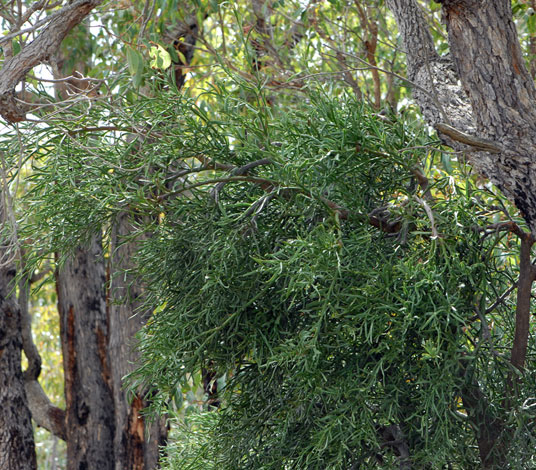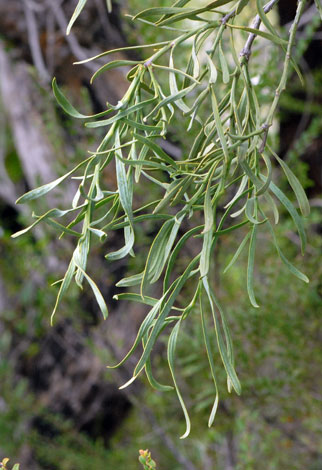Nuytsia floribunda Christmas Tree Endemic


To a British botanist this plant is a glorious oddity. It is a Mistletoe (Loranthaceae family) with a proper underground root system which is partially parasitic. It doesn't, like other Western Australian Mistletoes such as the Amyema genus, live on a host tree but is actually a tree itself. So a bit like the Orobanche (Broomrapes) genus in Europe, Nuytsia seeks out other plant roots, binds to them and takes some of its nourishment from them.
As often happens with such hemi-parasites, it doesn't have to be economical with flower production because it isn't seeking all the needed nutrients itself but stealing some of them from other plants nearby. The roots of Nuytsia bond with host plants via Haustoria. A haustorium is like a little pair of scissors at the end of a root and it uses these to slice into and join onto the roots of other nearby trees or plants, including grasses. It can take nutrients this way from plants up to 150 metres away from the Nuytsia itself. It is a powerful seeker of underground roots or anything which looks like a root and so has been known to disrupt telephone wires, underground TV and broadband fibre optic cables too.
As the common name suggests, it flowers near December time so is known locally as The (Western Australian) Christmas Tree but it starts flowering as early as October. Nuytsia floribunda is found most often near the coast from Esperance, commonly around Perth and up to Geraldton as well as dotted inland in the Wheat Belt. It was named after the Dutch Explorer Pieter Nuyts who explored the west and south coasts of Australia and humbly named the whole area Pieter Nuyts Land after himself.




